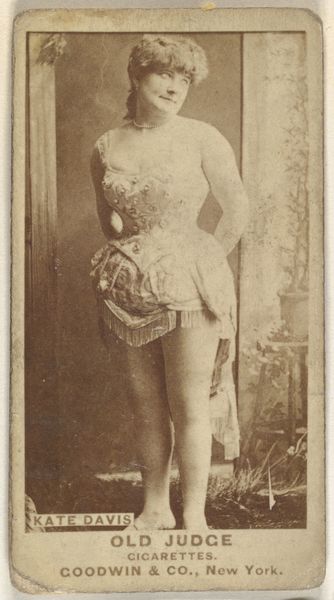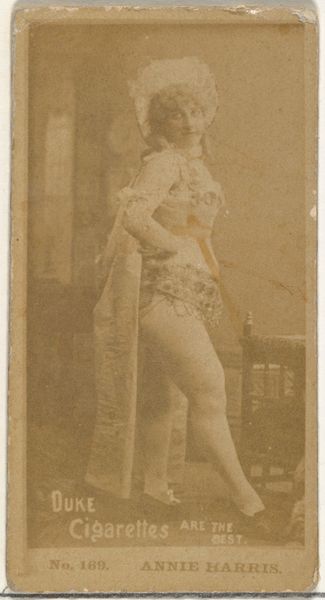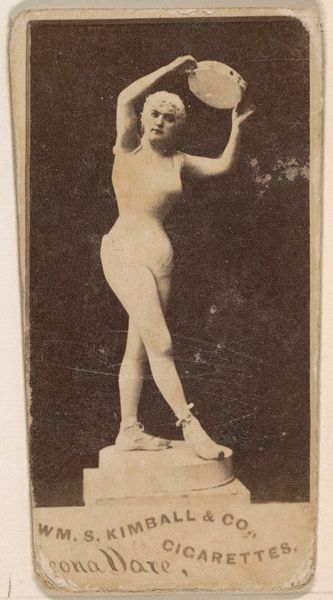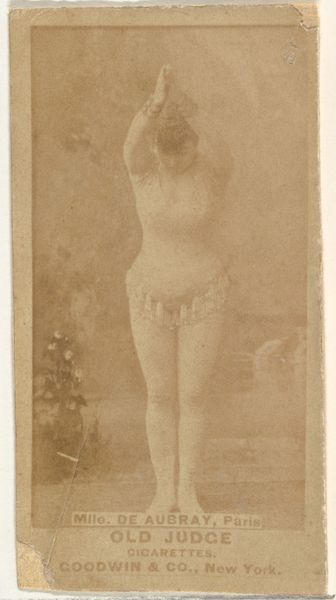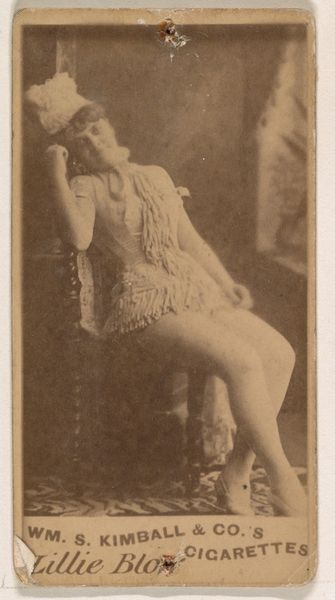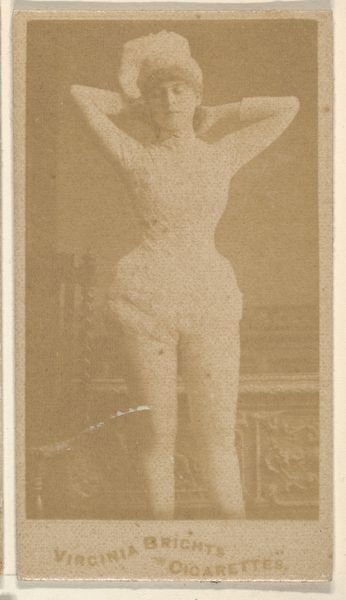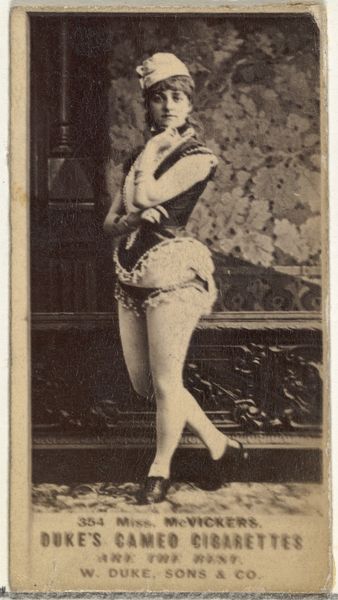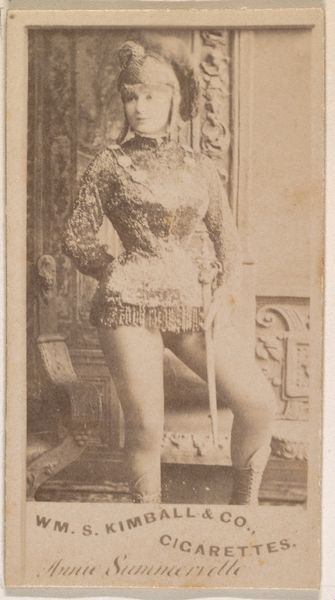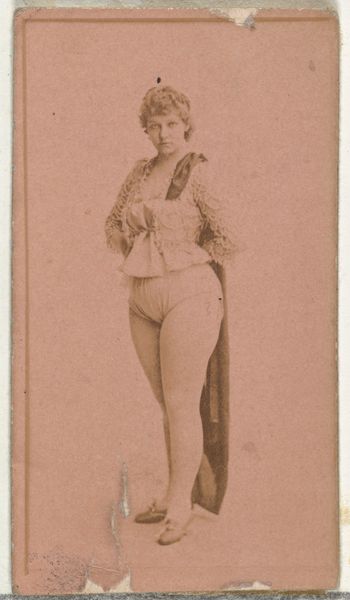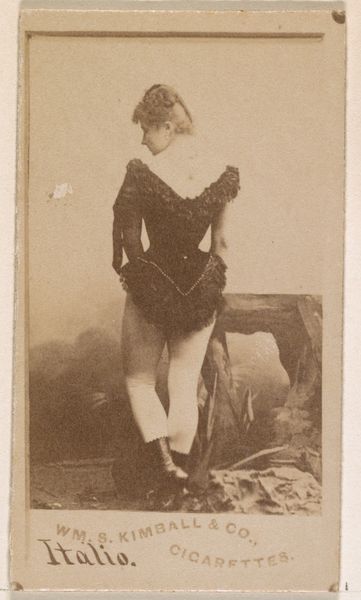
Lilly Dana, from the Actresses series (N203) issued by Wm. S. Kimball & Co. 1889
0:00
0:00
drawing, print, photography
#
portrait
#
drawing
# print
#
photography
#
nude
Dimensions: Sheet: 2 5/8 × 1 3/8 in. (6.6 × 3.5 cm)
Copyright: Public Domain
Curator: This is "Lilly Dana," a photograph from the Actresses series by William S. Kimball & Co., dating back to 1889. Editor: My first thought is that sepia tone gives the whole thing a dreamy, nostalgic quality. It's small, almost intimate, like a keepsake. Curator: Exactly. These cards were produced as trade cards included in cigarette packs, very much a product of their time, and of growing industry. The series captured actresses, singers, and dancers of the era, playing a crucial role in disseminating idealized images of femininity and celebrity culture. Editor: It's a calculated, yet strangely organic composition, from the bars, seemingly framing her to the drape of that gown and the pose itself. There's an arrangement to the way she presents herself here. How fascinating. Curator: Indeed. The placement of actresses on cigarette cards reflects both their fame, as well as the increasing commodification of female image during this period. It shows how images, like other materials, are commercial goods as well. Editor: Right. I'm struck by how the use of sepia minimizes flaws but, somehow, also obscures her real identity. Lilly almost becomes a figure in a fable; is she contained or revealed? It is beautiful, and then again it isn’t…all at once, isn’t it? Curator: A very astute point! What we witness with these actresses, on cards and on stages alike, really reflects the construction of a particular female identity: carefully constructed, readily consumed, and infinitely reproducible, especially given how available they were inside a pack of cigarettes. Editor: I come away appreciating not just her image, but the careful deliberation behind its aesthetic appeal; there's power here. It has shifted from that single image into what it means to capture feminine wiles. Curator: Absolutely. Looking at it now offers insights into that late 19th-century world. It really speaks to how society then circulated images of actresses within their socio-economic frameworks.
Comments
No comments
Be the first to comment and join the conversation on the ultimate creative platform.

